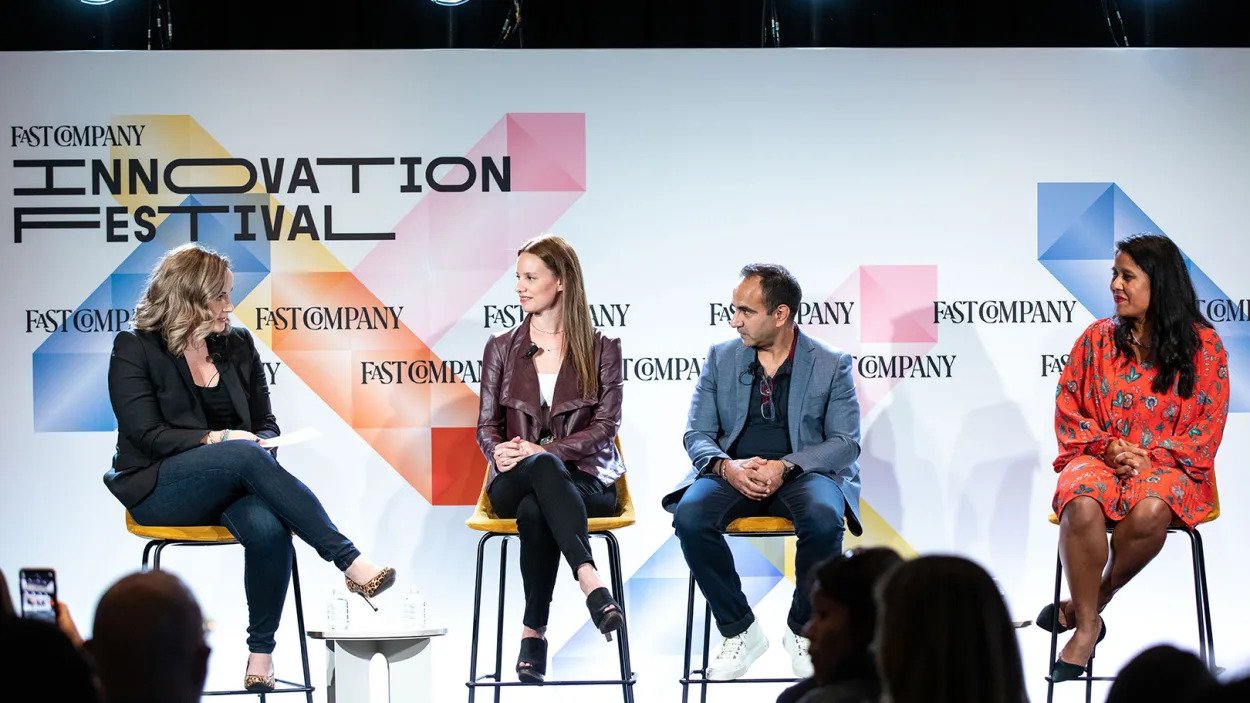Digital transformation is helping to forge stronger teamwork—even during the often-difficult M&A process
If we can take away one positive from the pandemic, it was that it inspired companies to fast-track their use of technology. This digital transformation is fundamentally changing the way firms operate, from how they produce goods to how they fuel growth and spark innovation.
Perhaps the most important part of this, however, is how it is helping to supercharge collaboration—both inside companies and through partnerships and mergers with other firms. It’s helped suddenly remote employees work together in real time, and aided companies as they brought their corporate cultures together during the mergers-and-acquisitions (M&A) process.
At the recent Fast Company Innovation Festival, global technology company Altair hosted a panel discussion on how technology and data are helping companies make more informed—and humancentric—decisions around collaboration that drives innovation.
Here are three key takeaways from the event.
1. Technology is broadening collaboration.
The expanded use of technology has, in fact, allowed companies to broaden collaboration among stakeholders while increasing productivity. In-person meetings and human connection are still important, but good videoconferencing, whiteboarding, and other tools can make collaboration more possible for a distributed workforce. “When you have people that are spread across geographies, you don’t necessarily need to take a day to fly six hours just to have a half-hour meeting and then fly back,” said Tejasvi Chugh, vice president of corporate strategy and M&A at IBM.
The increased use of technology has allowed Altair to more easily connect with people from other organizations during the due diligence process—and hear their innovative ideas early on in the acquisition process, said Stephanie Buckner, Altair’s chief operating officer. “It has allowed us to interact and move faster through those types of engagements, even well before meeting them in person. At Altair, we believe that innovation comes from everywhere, not just within our organization but truly from a global standpoint. So, technology has given us more reach.”
Stephanie Dolan, an M&A consulting principal at Deloitte Consulting, said virtual technologies have made it easier to bring more people into important discussions about potential acquisition targets. The result has been more voices at the table during these important conversations. “It’s actually increasing the diversity in the room because you’re able to pull people from different parts of the organization,” she said. “I am seeing a lot more women and people of color join deal teams and also be part of the target-screening process. And that has created a heightened sense of innovation because of those new voices, which is really exciting.”
2. Don’t get bogged down in big data.
Companies are increasingly relying on data to drive their businesses, from sophisticated algorithms that streamline manufacturing processes to workforce data that helps them make the most of their human capital. But amid a growing sea of data, companies face a big question: What data is really useful?
For Buckner, the answer at Altair isn’t to simply hoard data but rather to first identify the problem you’re trying to solve and then carefully select the data that will inform your decision. “You want to make sure you have the right data, not just big data,” she said.
IBM’s Chugh noted that 1,000 petabytes of data are generated every day around the world, and that number is expected to grow threefold over the next three years. However, less than 20% of that data is actually harnessed for decision-making. Over time, IBM has developed tools to make better data-driven decisions around M&A and post-acquisition integrations. One initiative is the White Glove Tech Help Desk Service, which gives newly acquired employees access to a dedicated coworker for help getting familiar with IBM systems. “You want to do everything possible so these employees feel like they want to be here,” Chugh said. “So, we’ve harnessed the power of data to make decisions about what’s important to those employees.”
3. Don’t forget the human connection.
While using new technologies and optimizing data are crucial, companies can’t neglect the human factor. That’s especially true when two corporate cultures are being combined as the result of a merger or acquisition. Dolan said Deloitte pulls in plenty of data to assess a company’s culture and measure employee engagement. But the end result of that data collection is to create a pathway specifically designed to help these employees as their companies come together.
“We’re using that data to craft a journey for employees,” she said. “We use human-centered design to think about the moments in the employee journey that really matter, and to focus on the interventions or activities that would be most meaningful to employees. The goal is to give people what they need at just the right time.”
Buckner pointed out that Altair relies on individual feedback to help draw a bead on what makes a particular company tick. Altair seeks input from people throughout the company, not just within the corporate development team, to help paint a more complete picture of that company’s culture. “The fact is that cultural insights can come from a developer or a sales individual or from anywhere within the organization,” she said. “After all, they are the boots on the ground.”
Author Name: FastCo Works
This article first appeared in https://www.fastcompany.com
Seeking to build and grow your brand using the force of consumer insight, strategic foresight, creative disruption and technology prowess? Talk to us at +971 50 6254340 or engage@groupisd.com or visit www.groupisd.com/story

